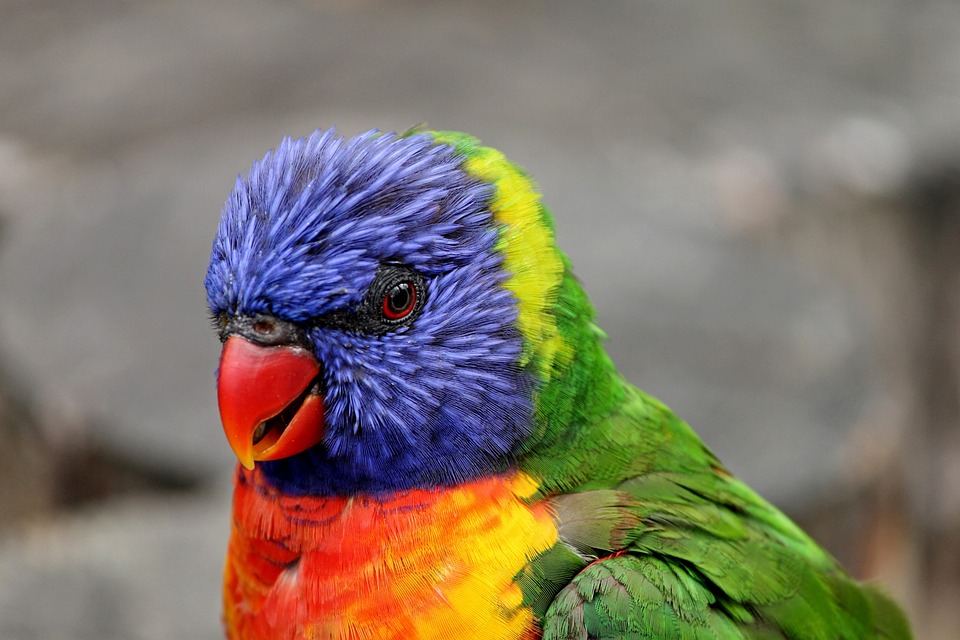Introduction:
Parrots are renowned for their ability to mimic sounds and human speech, captivating us with their impressive vocal repertoire. One intriguing behavior that often leaves parrot owners puzzled is their uncanny ability to imitate microwave beeps. In this article, we will delve into the fascinating world of parrot behavior, exploring why parrots mimic microwave beeps and what it means for their overall well-being.
I. The Science Behind Parrot Mimicry
A. Vocal Learning in Parrots
Parrots are among the few species in the animal kingdom that have the ability to learn and imitate sounds. This vocal learning is a complex cognitive behavior that involves several key brain regions, including the auditory cortex and the vocal learning circuit. Parrots possess the unique ability to mimic not only the sounds they hear in their natural environment but also human speech and various artificial sounds.
B. The Role of Mirror Neurons
Mirror neurons, a type of brain cell, play a crucial role in parrot mimicry. These neurons enable parrots to observe and imitate the actions and sounds they hear, including microwave beeps. When a parrot hears a sound repeatedly, mirror neurons in their brain fire, allowing them to recreate the sound accurately.
C. Environmental Factors Influencing Mimicry
The environment in which a parrot is raised greatly influences their ability to mimic sounds. Parrots raised in households with a diverse range of sounds, including microwave beeps, are more likely to imitate these sounds. Additionally, social interaction and exposure to different sounds during the critical period of vocal learning in their early stages of development can enhance their mimicry skills.
II. Why Do Parrots Mimic Microwave Beeps?
A. Attention-seeking Behavior
Parrots are intelligent and social creatures that thrive on human interaction. Mimicking microwave beeps can be a form of attention-seeking behavior, as they see their owners’ reaction to the sound. When a parrot successfully imitates a microwave beep and receives attention or a reward, they are more likely to continue mimicking the sound in the future.
B. Associative Learning
Parrots are excellent at making associations between sounds and events. If a parrot observes their owners frequently using the microwave, they may associate the sound of the microwave beep with food or treats. This association motivates them to imitate the sound, hoping to receive a similar reward.
C. Vocalization as a Sign of Comfort
Parrots are known for their vocalizations, which can serve various purposes. Some parrots may mimic microwave beeps as a way to vocalize and express comfort. The repetitive nature of microwave beeps may provide a soothing effect for the parrot, similar to how white noise can calm humans.
III. Interpreting Parrot Behavior: What Does It Mean?
A. Emotional State
Parrot mimicry, including microwave beeps, can provide insights into their emotional state. If a parrot mimics microwave beeps when they are excited or happy, it may indicate their positive emotional well-being. On the other hand, if a parrot mimics microwave beeps when they are stressed or anxious, it may be a sign of their discomfort or unease.
B. Bonding with Their Human Companions
Parrots are highly social animals that form strong bonds with their human companions. Mimicking microwave beeps can be a way for parrots to strengthen their bond with their owners, as they observe their reactions and seek attention or interaction.
C. Reinforcement and Encouragement
Parrots are intelligent creatures that respond to reinforcement and encouragement. If a parrot receives attention or treats when they mimic microwave beeps, they are more likely to continue this behavior. Positive reinforcement can be used to guide and shape a parrot’s vocal repertoire, encouraging them to mimic specific sounds.
IV. Addressing Common Concerns: FAQs
1. Is it normal for my parrot to mimic microwave beeps?
Yes, it is normal for parrots to mimic various sounds, including microwave beeps. It is a natural behavior for them and showcases their cognitive abilities.
2. Can parrots become addicted to mimicking microwave beeps?
Parrots can become fixated on certain sounds, including microwave beeps. However, with proper training and enrichment, parrots can be redirected to mimic other sounds and behaviors.
3. How can I prevent my parrot from mimicking unwanted sounds?
Consistency and positive reinforcement are key in redirecting a parrot’s behavior. By rewarding desired sounds and behaviors and ignoring unwanted ones, you can gradually discourage them from mimicking unwanted sounds.
4. Is there a way to encourage my parrot to mimic specific sounds?
Yes, by using positive reinforcement techniques, you can encourage your parrot to mimic specific sounds. Consistently rewarding them when they imitate the desired sound will reinforce the behavior.
5. Can mimicking microwave beeps be detrimental to my parrot’s mental health?
Mimicking microwave beeps itself is not detrimental to a parrot’s mental health. However, it is important to provide a stimulating environment that meets their social and cognitive needs to ensure their overall well-being.
Conclusion:
Parrots are incredible creatures with unique behavioral traits, including their ability to mimic various sounds, including microwave beeps. Understanding the science behind parrot mimicry helps us interpret their behavior and strengthen the bond we share with them. While mimicking microwave beeps may have different motivations, it is generally a sign of their adaptability and desire for social interaction. As responsible parrot owners, we should provide a stimulating environment that encourages their natural behaviors while considering their overall well-being.









